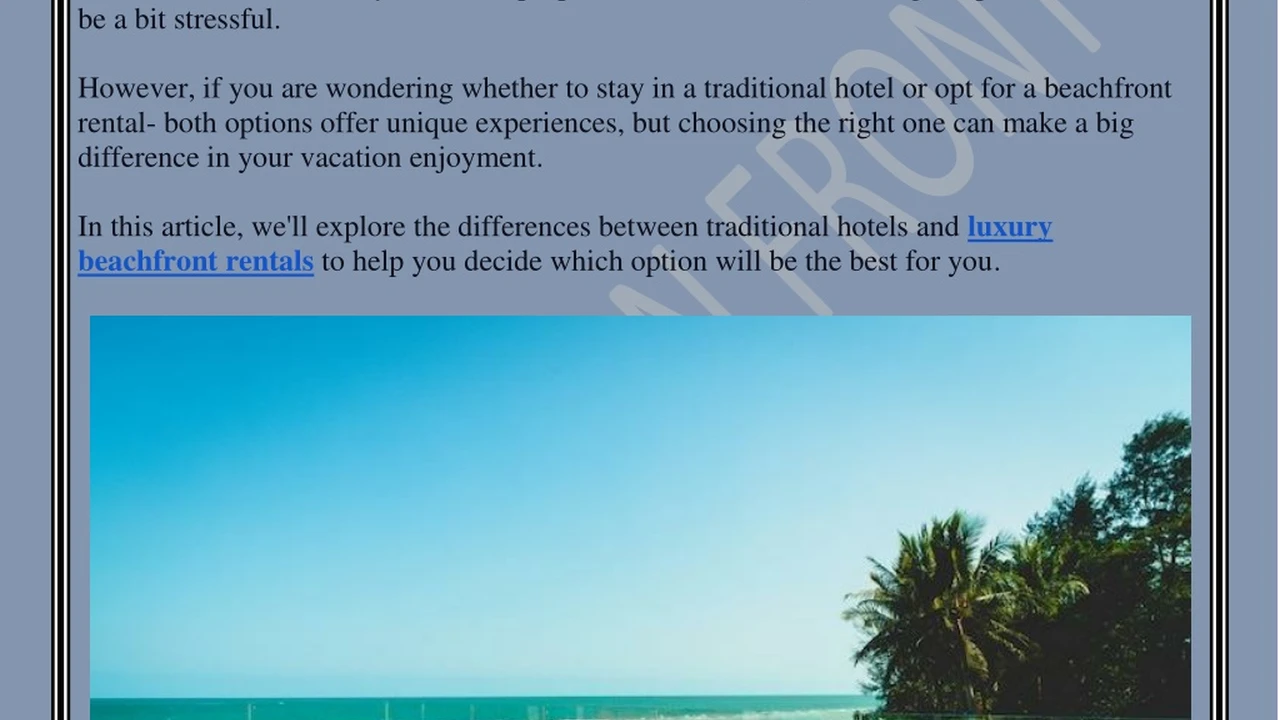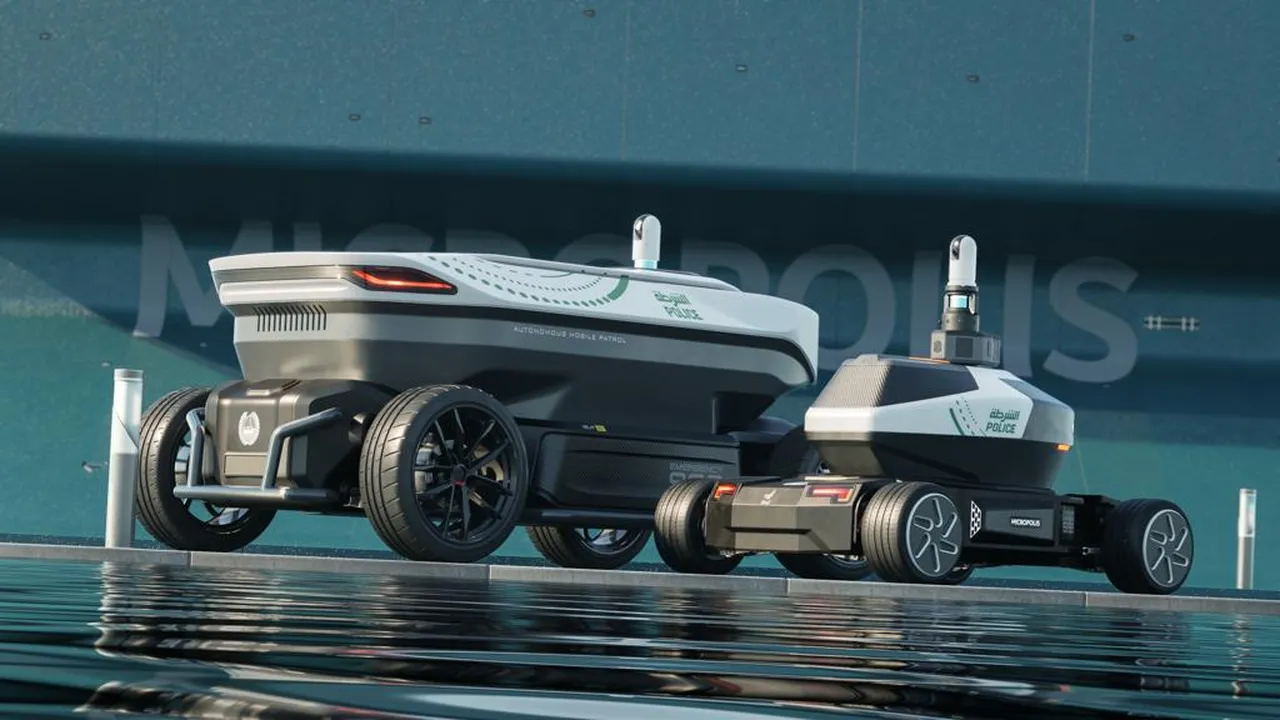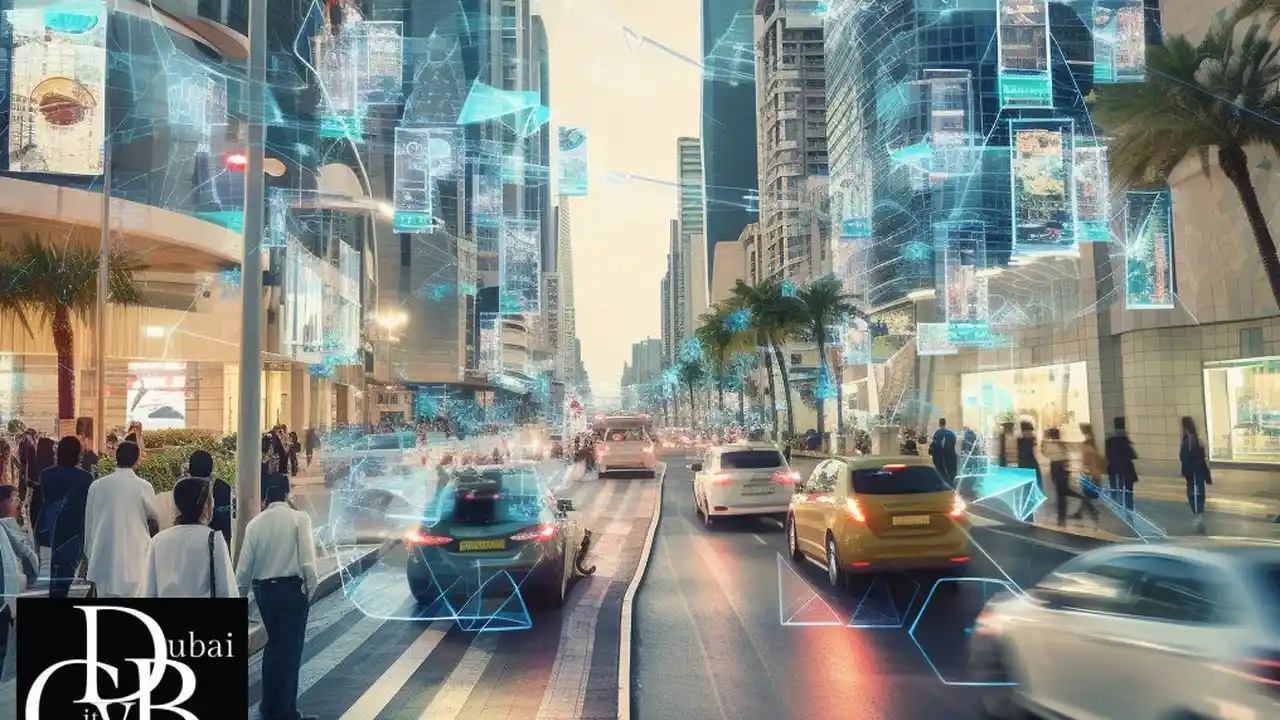Floating Architecture_ Abu Dhabi's Unique Designs
Floating Architecture Abu Dhabis Luxurious and Innovative Waterborne Structures

Abu Dhabi, a city synonymous with innovation, luxury, and architectural marvels, is constantly pushing the boundaries of design and engineering. In recent years, a fascinating trend has emerged: floating architecture. These innovative structures, ranging from floating hotels to unique residential concepts, are redefining the city's skyline and offering unparalleled experiences. Let's dive into the captivating world of Abu Dhabi's floating architecture, exploring its design principles, benefits, challenges, and some of the most remarkable projects.
The Allure of Floating Structures Why Abu Dhabi Embraces Waterborne Design
Why are floating structures gaining traction in Abu Dhabi? Several factors contribute to their growing popularity:
* **Limited Land Availability:** Abu Dhabi, like many coastal cities, faces the challenge of limited land availability. Floating structures offer a solution by expanding usable space onto the water. * **Environmental Sustainability:** Floating structures can be designed with sustainability in mind, incorporating renewable energy sources, wastewater treatment systems, and eco-friendly materials. This aligns with Abu Dhabi's commitment to environmental stewardship. * **Tourism and Luxury Appeal:** The novelty and exclusivity of floating structures attract high-end tourists and residents seeking unique experiences. Floating hotels, in particular, offer unparalleled views and privacy. * **Resilience to Climate Change:** As sea levels rise, floating structures offer a resilient alternative to traditional land-based construction. They can adapt to changing water levels, minimizing the risk of flooding. * **Architectural Innovation:** Floating architecture allows for greater design flexibility and innovation. Architects can create unique shapes and configurations that would be difficult or impossible to achieve on land.Designing for the Water Understanding the Principles of Floating Architecture
Floating architecture is not simply about placing a building on the water. It requires a deep understanding of hydrodynamics, structural engineering, and environmental considerations. Here are some key principles:
* **Buoyancy:** The fundamental principle of floating architecture is buoyancy, which is the upward force exerted by a fluid that opposes the weight of an immersed object. Structures must be designed to displace enough water to support their weight. * **Stability:** Floating structures must be stable and resistant to overturning forces caused by waves, wind, and currents. This is achieved through careful design of the hull or pontoon system and the distribution of weight. * **Mooring and Anchoring:** Floating structures need to be securely anchored or moored to prevent them from drifting. Various mooring systems are used, depending on the size and location of the structure. * **Connection to Infrastructure:** Floating structures need to be connected to land-based infrastructure for utilities such as water, electricity, and sewage disposal. Flexible connections are used to accommodate the movement of the structure. * **Environmental Impact:** Designers must minimize the environmental impact of floating structures by using sustainable materials, protecting marine habitats, and preventing pollution.Floating Hotels A Luxurious Escape on the Water
Floating hotels are perhaps the most visible example of floating architecture in Abu Dhabi. These luxurious havens offer guests a unique and unforgettable experience, combining the comfort of a five-star hotel with the tranquility of the sea.
Anantara World Islands Dubai Resort A Glimpse of Floating Luxury Near Abu Dhabi
While technically located in Dubai, the Anantara World Islands Dubai Resort provides a close example of the kind of luxury experience Abu Dhabi is aiming to create with its floating structures. This resort, situated on its own island in the World Islands archipelago, offers stunning overwater villas with direct access to the sea.
* **Key Features:** Private plunge pools, overwater hammocks, gourmet dining options, and a dedicated spa. * **Use Cases:** Romantic getaways, family vacations, corporate retreats, and special events. * **Pricing:** Varies depending on the season and room type, but typically ranges from $800 to $2,000 per night.Potential Future Floating Hotel Projects in Abu Dhabi
While specific projects might be under wraps, the ambition to build similar luxury floating hotels in Abu Dhabi is clear. Imagine a resort offering:
* **Underwater Restaurants:** Dining experiences with panoramic views of marine life. * **Submersible Suites:** Ultra-luxurious accommodations located below the waterline. * **Helicopter Landing Pads:** For convenient arrival and departure. * **Water Sports Activities:** Including jet skiing, snorkeling, and diving.Product Recommendations for Enhancing the Floating Hotel Experience
To truly elevate the floating hotel experience, several products and services can be incorporated:
* **High-End Water Toys:** Seabobs, electric surfboards, and inflatable yachts for exploring the surrounding waters. * **Underwater Drones:** For capturing stunning underwater footage and exploring marine life without getting wet. * **Personalized Concierge Services:** Providing guests with customized itineraries and exclusive access to local attractions. * **Sustainable Amenities:** Eco-friendly toiletries, reusable water bottles, and energy-efficient appliances.Floating Residences Redefining Waterfront Living in Abu Dhabi
Beyond hotels, floating residences are also gaining popularity in Abu Dhabi. These innovative homes offer residents a unique opportunity to live on the water, enjoying stunning views and a close connection to nature.
The SeaScape Villas A Vision of Floating Homes
While not yet a reality in Abu Dhabi, the concept of SeaScape villas represents the future of floating residences. These modular, self-sufficient homes are designed to be environmentally friendly and adaptable to changing water levels.
* **Key Features:** Solar panels, rainwater harvesting systems, and wastewater treatment facilities. * **Use Cases:** Primary residences, vacation homes, and eco-tourism developments. * **Pricing:** Dependent on size and customization, but estimated to range from $500,000 to $2 million.Considerations for Floating Home Ownership in Abu Dhabi
Owning a floating home in Abu Dhabi would come with unique considerations:
* **Mooring Fees:** Costs associated with securing the home to the water. * **Maintenance:** Regular inspections and maintenance to ensure the structure remains seaworthy. * **Insurance:** Specialized insurance policies to cover damage from storms or other natural disasters. * **Regulations:** Compliance with local building codes and regulations for floating structures.Product Recommendations for Floating Home Living
To make floating home living comfortable and convenient, consider these products:
* **Smart Home Automation Systems:** Controlling lighting, temperature, and security from a smartphone or tablet. * **Water Filtration Systems:** Ensuring a clean and safe water supply. * **Solar Power Systems:** Generating electricity from the sun to reduce reliance on the grid. * **Electric Boats:** For navigating the waterways and exploring the surrounding area.Unique Architectural Designs Pushing the Boundaries of Innovation
Floating architecture offers architects unparalleled opportunities to create unique and innovative designs. Here are some examples of projects that push the boundaries of what's possible:
The Floating City A Visionary Concept for Sustainable Urban Development
The concept of a floating city is a grand vision for sustainable urban development. These self-sufficient communities would be designed to accommodate thousands of residents, incorporating renewable energy sources, vertical farming, and advanced waste management systems.
* **Key Features:** Modular construction, integrated transportation networks, and green spaces. * **Use Cases:** Addressing overpopulation, climate change, and rising sea levels. * **Pricing:** The cost of building a floating city would be substantial, requiring significant investment from governments and private companies.The Floating Museum A Cultural Hub on the Water
A floating museum would offer a unique cultural experience, showcasing art, history, and science in an innovative setting. The museum could be designed to move between different locations, bringing its exhibits to a wider audience.
* **Key Features:** Flexible exhibition spaces, interactive displays, and panoramic views of the surrounding waters. * **Use Cases:** Promoting cultural exchange, educating the public, and attracting tourists. * **Pricing:** The cost of building a floating museum would depend on its size and complexity.The Floating Data Center A Sustainable Solution for Data Storage
Floating data centers offer a sustainable solution for data storage, utilizing the cool water for cooling and reducing energy consumption. These centers could be located near coastal cities, providing reliable and efficient data storage services.
* **Key Features:** Advanced cooling systems, renewable energy sources, and secure data storage. * **Use Cases:** Supporting cloud computing, big data analytics, and artificial intelligence. * **Pricing:** The cost of building a floating data center would be competitive with traditional land-based centers.Challenges and Considerations Overcoming the Hurdles of Floating Construction
While floating architecture offers numerous benefits, it also presents several challenges:
* **Regulations and Permitting:** Obtaining the necessary permits and approvals for floating structures can be a complex and time-consuming process. * **Financing:** Securing financing for floating projects can be difficult, as lenders may be unfamiliar with the technology and associated risks. * **Environmental Impact Assessment:** Thorough environmental impact assessments are required to ensure that floating structures do not harm marine ecosystems. * **Construction and Maintenance:** Building and maintaining floating structures requires specialized expertise and equipment. * **Public Perception:** Overcoming public skepticism and building trust in the safety and reliability of floating structures is crucial.The Future of Floating Architecture in Abu Dhabi A Vision of Waterborne Innovation
The future of floating architecture in Abu Dhabi is bright. As the city continues to embrace innovation and sustainability, we can expect to see more and more floating structures gracing its coastline. From luxurious floating hotels to innovative residential concepts, floating architecture is poised to redefine the city's skyline and offer unparalleled experiences.
Technological Advancements Driving Innovation
Several technological advancements are driving the growth of floating architecture:
* **Advanced Materials:** Lightweight, durable, and corrosion-resistant materials are making floating structures more affordable and sustainable. * **Modular Construction:** Modular construction techniques allow for faster and more efficient construction of floating structures. * **3D Printing:** 3D printing is being used to create complex shapes and designs for floating structures. * **Artificial Intelligence:** AI is being used to optimize the design and operation of floating structures.Sustainability at the Forefront Eco-Friendly Floating Designs
Sustainability is a key consideration in the design of floating structures. Here are some examples of eco-friendly features:
* **Renewable Energy Sources:** Solar panels, wind turbines, and wave energy converters can be used to generate electricity. * **Wastewater Treatment Systems:** On-site wastewater treatment systems can reduce pollution and conserve water. * **Green Roofs and Walls:** Green roofs and walls can improve air quality and reduce the urban heat island effect. * **Sustainable Materials:** Recycled and renewable materials can be used in the construction of floating structures.Potential Investment Opportunities Riding the Wave of Floating Architecture
The growth of floating architecture in Abu Dhabi presents numerous investment opportunities:
* **Real Estate Development:** Investing in floating hotels, residences, and commercial properties. * **Construction and Engineering:** Providing specialized construction and engineering services for floating projects. * **Technology and Innovation:** Developing new technologies and solutions for floating architecture. * **Tourism and Hospitality:** Offering unique tourism and hospitality experiences on floating structures.Specific Product Recommendations for Floating Structures
Here's a deeper dive into specific product recommendations, with comparisons and detailed information:
Mooring Systems Product Comparison and Details
Choosing the right mooring system is crucial for the stability and safety of a floating structure. Here's a comparison of different types of mooring systems:
* **Chain and Anchor Systems:** A traditional and reliable mooring system that uses chains and anchors to secure the structure to the seabed. * **Pros:** Simple, robust, and cost-effective. * **Cons:** Can damage the seabed, limited flexibility in positioning. * **Pricing:** Varies depending on the size and weight of the structure, but typically ranges from $10,000 to $50,000. * **Example Product:** **Danforth Anchor:** A widely used anchor known for its holding power in various seabed conditions. * **Pile Mooring Systems:** Using piles driven into the seabed to secure the structure. * **Pros:** High stability, minimal environmental impact. * **Cons:** Requires suitable seabed conditions, can be expensive. * **Pricing:** Can range from $50,000 to $200,000 depending on the number and depth of the piles. * **Example Product:** **Steel Piles:** Durable and strong piles suitable for a variety of seabed conditions. * **Tension Leg Platforms (TLPs):** A sophisticated mooring system that uses tethers to maintain tension and stability. * **Pros:** Excellent stability in deep water, minimal movement. * **Cons:** Complex and expensive, requires specialized engineering. * **Pricing:** Can range from millions of dollars, depending on the size and complexity of the platform. * **Example Product:** **Synthetic Tethers:** Lightweight and strong tethers that provide excellent tension and stability. * **Dynamic Positioning (DP) Systems:** Uses thrusters and sensors to maintain the structure's position without physical mooring. * **Pros:** Highly flexible, can be used in deep water and challenging conditions. * **Cons:** Requires constant power, can be expensive to operate. * **Pricing:** Initial investment can be high, with ongoing operational costs for fuel and maintenance. * **Example Product:** **Kongsberg DP System:** A leading provider of dynamic positioning systems for offshore vessels and structures.Water Treatment Systems Product Comparison and Details
Ensuring a clean and safe water supply is essential for floating structures. Here's a comparison of different water treatment systems:
* **Reverse Osmosis (RO) Systems:** A membrane-based filtration process that removes impurities and salts from water. * **Pros:** Highly effective, can produce potable water from seawater. * **Cons:** Requires high energy consumption, produces brine as a byproduct. * **Pricing:** Ranges from $5,000 to $50,000 depending on the capacity. * **Example Product:** **Grundfos RO System:** A reliable and efficient RO system for residential and commercial applications. * **Ultraviolet (UV) Disinfection Systems:** Uses ultraviolet light to kill bacteria and viruses in water. * **Pros:** Effective, environmentally friendly, and requires low maintenance. * **Cons:** Does not remove impurities or salts. * **Pricing:** Ranges from $500 to $5,000 depending on the flow rate. * **Example Product:** **Trojan UV System:** A leading provider of UV disinfection systems for water and wastewater treatment. * **Desalination Plants:** Large-scale facilities that convert seawater into potable water. * **Pros:** Can provide a large supply of fresh water. * **Cons:** Requires significant investment, high energy consumption, and environmental impact. * **Pricing:** Can range from millions of dollars, depending on the capacity. * **Example Product:** **IDE Technologies Desalination Plant:** A leading provider of desalination solutions for municipalities and industries.Waste Management Systems Product Comparison and Details
Proper waste management is crucial for protecting the environment and maintaining the hygiene of floating structures. Here's a comparison of different waste management systems:
* **On-Site Waste Treatment Systems:** Treating waste on-site using technologies such as composting, anaerobic digestion, or incineration. * **Pros:** Reduces the need for transporting waste, can produce valuable byproducts such as compost or biogas. * **Cons:** Requires space and specialized equipment, can be expensive to install and operate. * **Pricing:** Ranges from $10,000 to $100,000 depending on the capacity and technology. * **Example Product:** **BioHiTech Digester:** An on-site food waste digester that converts food waste into biogas and fertilizer. * **Vacuum Sewage Systems:** Uses vacuum pressure to transport sewage to a central treatment plant. * **Pros:** Reduces water consumption, prevents leaks and spills. * **Cons:** Requires specialized piping and equipment, can be expensive to install. * **Pricing:** Ranges from $5,000 to $50,000 depending on the size of the system. * **Example Product:** **Jets Vacuum AS:** A leading provider of vacuum sewage systems for marine and land-based applications. * **Greywater Recycling Systems:** Treats and reuses greywater (wastewater from showers, sinks, and laundry) for non-potable purposes such as irrigation and toilet flushing. * **Pros:** Conserves water, reduces the demand on freshwater resources. * **Cons:** Requires separate plumbing and treatment systems. * **Pricing:** Ranges from $1,000 to $10,000 depending on the size of the system. * **Example Product:** **Nexus eWater:** A greywater recycling system for residential and commercial applications.Renewable Energy Systems Product Comparison and Details
Generating electricity from renewable sources is essential for reducing the environmental impact of floating structures. Here's a comparison of different renewable energy systems:
* **Solar Power Systems:** Using photovoltaic (PV) panels to convert sunlight into electricity. * **Pros:** Clean, reliable, and cost-effective in sunny climates. * **Cons:** Intermittent, requires storage for nighttime use. * **Pricing:** Ranges from $3 to $5 per watt installed. * **Example Product:** **SunPower Solar Panels:** High-efficiency solar panels with a long lifespan. * **Wind Turbines:** Using wind turbines to convert wind energy into electricity. * **Pros:** Clean, renewable, and can generate electricity day and night. * **Cons:** Intermittent, requires a windy location, can be noisy. * **Pricing:** Ranges from $1,000 to $5,000 per kilowatt installed. * **Example Product:** **Vestas Wind Turbines:** A leading provider of wind turbines for utility-scale and distributed generation. * **Wave Energy Converters:** Using wave energy converters to convert wave motion into electricity. * **Pros:** Clean, renewable, and can generate electricity continuously. * **Cons:** Technology is still under development, can be expensive to install and maintain. * **Pricing:** Still relatively high, but expected to decrease as the technology matures. * **Example Product:** **EcoWave Power:** A company developing wave energy converters for coastal communities. By incorporating these innovative products and systems, Abu Dhabi can create truly sustainable and luxurious floating structures that offer a unique and unforgettable experience for residents and visitors alike. The key is to carefully consider the specific needs and requirements of each project and to choose the products and systems that best meet those needs.:max_bytes(150000):strip_icc()/277019-baked-pork-chops-with-cream-of-mushroom-soup-DDMFS-beauty-4x3-BG-7505-5762b731cf30447d9cbbbbbf387beafa.jpg)






